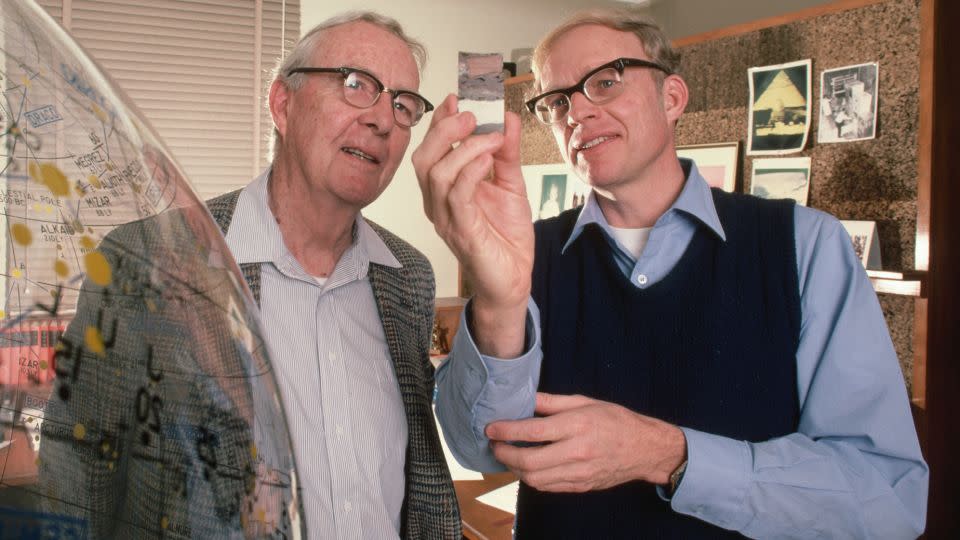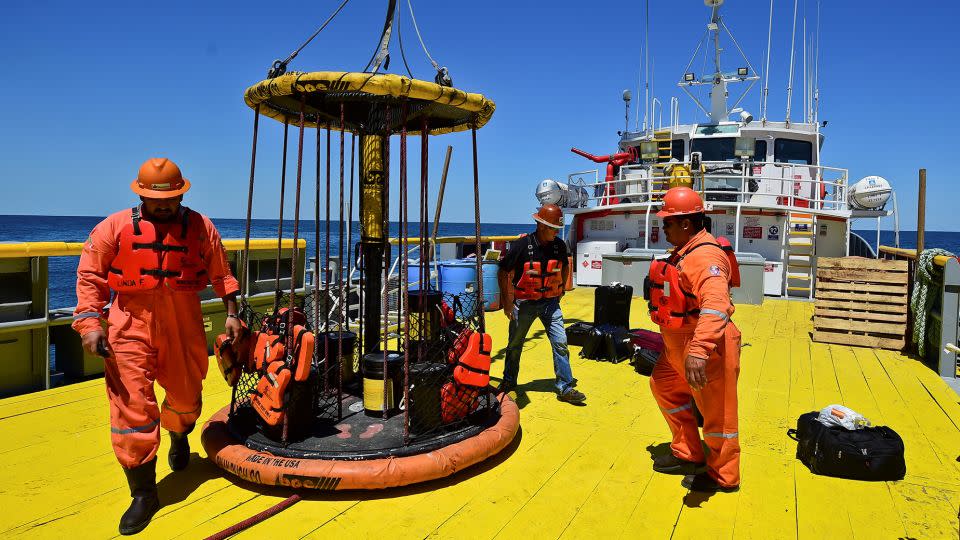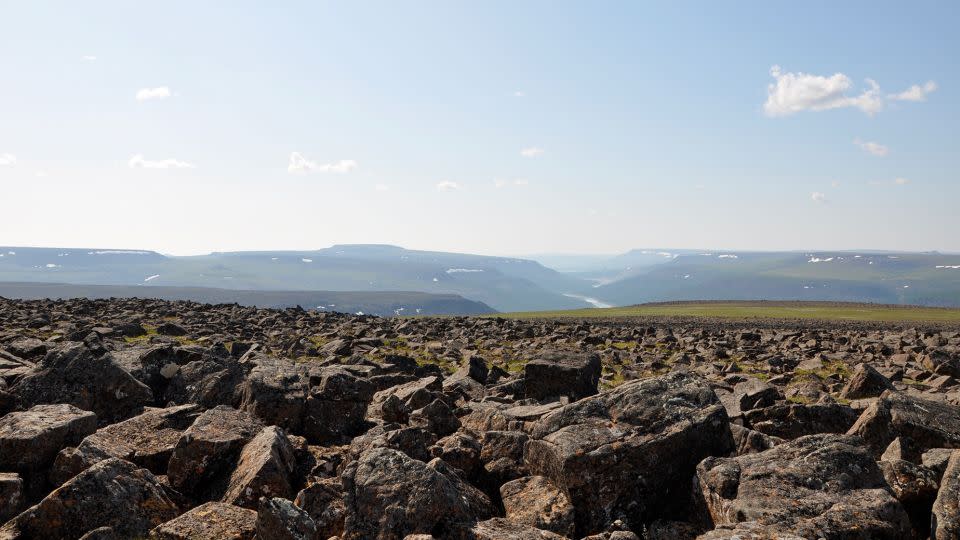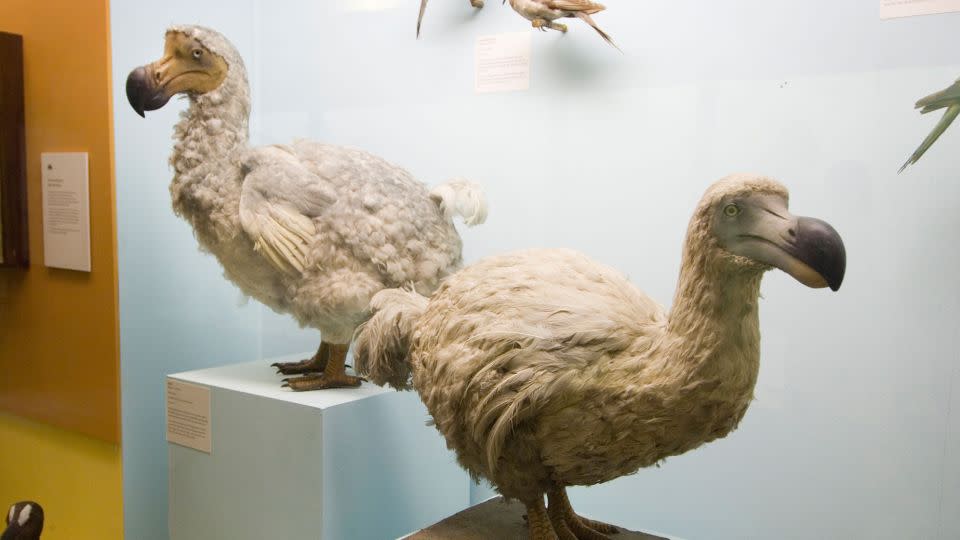What is a mass extinction, and why do scientists think we’re in the middle of one?
Sign up for CNN’s Wonder Theory science newsletter. Explore the universe with news on fascinating discoveries, scientific advancements and more.
No species lasts forever — extinction is part of the evolution of life.
But at least five times, a biological catastrophe has engulfed the planet, killing off the vast majority of species from water and land over a relatively short geological interval.
The most famous of these mass extinction events — when an asteroid slammed into Earth 66 million years ago, dooming the dinosaurs and many other species — is also the most recent. But scientists say it won’t be the last.
Many researchers argue we’re in the middle of a sixth mass extinction, caused not by a city-size space rock but by the overgrowth and transformative behavior of a single species — Homo sapiens. Humans have destroyed habitats and unleashed a climate crisis.
Calculations in a September study published in the journal PNAS have suggested that groups of related animal species are disappearing at a rate 35% times higher than the normally expected rate.
And while every mass extinction has winners and losers, there is no reason to assume that human beings in this case would be among the survivors.
In fact, study coauthor Gerardo Ceballos thinks the opposite could come to pass, with the sixth mass extinction transforming the whole biosphere, or the area of the world hospitable to life — possibly into a state in which it may be impossible for humanity to persist unless dramatic action is taken.
“Biodiversity will recover but the winners (are) very difficult to predict. Many of the losers in these past mass extinctions were incredibly successful groups,” said Ceballos, a senior researcher at the Institute of Ecology at the National Autonomous University of Mexico.
While the causes of the “big five” mass extinctions varied, understanding what happened during these dramatic chapters in Earth’s history — and what emerged in the aftermath of these cataclysms — can be instructive.
“Nobody’s seen these events but they’re on a scale that might be repeated. We’ve got … (to) learn from the past because that’s our only data set,” said Michael Benton, a professor of vertebrate paleontology at Bristol University in the United Kingdom who is the author of the new book “Extinctions: How Life Survives, Adapts and Evolves.”
A really bad day: Dino-killing asteroid and the iridium anomaly
While paleontologists have studied fossils for centuries, the science of mass extinction is relatively new. Radiometric dating, based on the natural radioactive decay of certain elements, like carbon, and other techniques revolutionized the ability to precisely determine the age of ancient rocks in the second half of the last century.
The developments set the stage for the work of the late Nobel Prize-winning physicist Luis Alvarez and his geologist son Walter, professor of Earth and planetary science at the Univeristy of California, Berkeley. Along with two other colleagues, they coauthored a sensational 1980 paper about the “iridium anomaly” — a 1-centimeter-thick (0.4-inch-thick) layer of sedimentary rock rich in iridium, an element rare on Earth’s surface but common in meteorites.
The researchers attributed the anomaly, which they initially identified in Italy, Denmark and New Zealand, to the impact of a large asteroid. They argued the unusual layer represented the exact moment in time when dinosaurs disappeared.
First met with skepticism, the iridium anomaly eventually was spotted in more and more places around the world. A decade later, a different group of researchers identified the smoking gun: a 200-kilometer-wide (125-mile-wide) crater off the coast of Mexico’s Yucatan Peninsula.
The rock and sediment there had a similar composition to the iridium layers, and the scientists suggested the depression, called the Chicxulub crater, was caused by the impact of an asteroid. Researchers believe the other anomalies spotted across the globe were caused by scattering debris when the space rock struck Earth.

Most paleontologists now accept that the asteroid caused what’s known as the end-Cretaceous extinction. The strike triggered a period of global cooling, with dust, soot and sulfur thrown up during the impact blocking the sun and likely shutting down photosynthesis, a key process for life.
One fossil site in North Dakota has provided an unprecedented level of detail on what that day — and its immediate aftermath — was like. Debris rained down, lodging itself into the gills of fish, while huge tsunami-like surges of water unleashed by the strike killed dinosaurs and other creatures. Scientists have even figured out that the asteroid smashed into Earth in springtime.
The disappearance of massive dinosaurs created a world in which mammals — and ultimately humans — were able to thrive. And dinosaurs weren’t the total losers they are sometimes made out to be: Scientists now believe that the birds that flap around in our backyards directly evolved from smaller relatives of Tyrannosaurus rex.
In the wake of the Alvarez duo’s stunning discovery, it initially seemed to scientists as if a space rock impact might be a general mechanism that explained all mass extinction events identified in the geological record. But the end-Cretaceous extinction is the only one reliably associated with an asteroid, according to Benton.
A different culprit, however, does explain several smaller extinction episodes and at least two mass extinctions, including the largest on record.
Apocalyptic volcanoes that caused global warming
Something known as a hyperthermal event — a sudden warming of the planet — spelled doom for large segments of life on Earth on more than one occasion. These events have followed a predictable pattern: volcanic eruption, carbon dioxide release, global warming, acid rain, ocean acidification — resulting in a longer road to oblivion than the dino-killing asteroid but equally destructive.
The biggest mass cataclysm of all time, called the end-Permian extinction, occurred 252 million years ago. Some 95% of species disappeared on land and at sea as a result of global warming — with temperatures rising perhaps 10 degrees Celsius to 15 degrees Celsius (18 F to 27 F), Benton noted in his book.
Known as “the Great Dying,” the extinction event was marked by supervolcanic eruptions that expelled greenhouse gases in an Australia-size region known as the Siberian Traps in Eurasia. That led to extreme acid rain that killed plant life and left the land surface rocky as the precipitation washed rich soil into the oceans, which in turn became swamped with organic matter, Benton explained.
However, into the void that followed emerged different creatures that evolved from the survivors, displaying many new ways of existence with features such as feathers, hair and speedy locomotion, Benton said.
“One of the big changes … on land, it seems, was a great rise in energy of everything,” he explained. “All of the surviving reptiles very rapidly became upright in posture instead of (low and) sprawling. (Some animals) became warm blooded in some way because we track feathers back to the early Triassic dinosaurs and their nearest relatives, and on the mammals side, we track the origin of hair.”

When dinosaurs got big
Another period of extreme volcanic activity 201 million years ago marked the end-Triassic mass extinction. It has been linked to the breakup of the Pangea supercontinent and the opening of the central Atlantic Ocean. Many land reptiles vanished as a result of that catastrophic event, making way for the towering sauropods and armored plant eaters commonly seen in childhood dinosaur books.
“The dinosaurs were already around but they had not fully diversified,” Benton said. “And then in the early Jurassic, … the dinosaurs really took off.”
Deeper in time, a mass extinction event that ended the Devonian Period, a geological era when life thrived on land for the first time, was also attributed to a hyperthermal event likely triggered by volcanic activity 359 million years ago, according to Benton’s book.
Other research published in 2020 suggested that multiple star explosions — known as supernovae — may have played a role.
A less well-understood period of worldwide cooling soon followed. It’s thought that these twin crises — separated by only 14 million years — led to rapid changes in temperature and sea level that resulted in the loss of at least 50% of the world’s species, wiping out many armored fish, early land plants, and animals such as the fishapods, or the earliest elpistostegalians, that were making the transition from water to land.
The resulting loss of marine species made way for the golden age of sharks during the Carboniferous Period, when the predators dominated the seas and evolved to include a variety of species with different forms.

Sinking temperatures and sea levels
Colder temperatures and a drastic drop in sea levels — perhaps as much as 10 degrees Celsius (18 F) cooler and 150 meters (492 feet) lower, respectively — played a major role in the earliest identified mass extinction event, the end-Ordovician, according to Benton. That shift, which took place about 444 million years ago, led to the disappearance of 80% of species at a time when life was mostly limited to the seas.
What triggered the die-off was the massive Gondwana supercontinent (today’s South America, Africa, Antarctica and Australia) drifting over the South Pole during the Ordovician. When a land mass covers the polar region, the ice cap reflects sunlight and slows melting, resulting in an expanding ice cap that lowers sea levels globally.
Adding to the cataclysm was volcanic activity. However, in this case, it did not appear to make global temperatures warmer. Instead, phosphorus from lava and volcanic rocks washed into the sea, gobbling up life-giving oxygen from the oceans.
The looming sixth mass extinction
A growing number of scientists believe a sixth mass extinction event of a magnitude equal to the prior five has been unfolding for the past 10,000 years as humans have made their mark around the globe.
The dodo, the Tasmanian tiger, the baiji, or Yangtze River dolphin, and the Western black rhino are just a few of the species that have disappeared so far in what’s known as the Holocene or Anthropocene extinction.
While the loss of even one species is devastating, Ceballos of the National Autonomous University of Mexico has highlighted that the ongoing episode of extinction is mutilating much thicker branches of the tree of life, a metaphor and model that groups living entities and maps their evolutionary relationships.
Entire categories of related species, or genera, are disappearing, a process he said is affecting whole ecosystems and endangering the survival of our own species.
Ceballos and his study coauthor Paul Ehrlich, Bing Professor Emeritus of Population Studies at Stanford University, assessed 5,400 genera of vertebrate animals, excluding fishes. A single genus groups one or more different but related species — for example the genus Canis includes wolves, dogs, coyotes and jackals.
The duo’s analysis found that 73 genera had gone extinct in the past 500 years. This is much faster than the expected “background” extinction rate, or the rate at which species would naturally die off without outside influence — in the absence of human beings, these 73 genera would have taken 18,000 years to vanish, the researchers said.
The causes of these extinctions are varied — land-use change, habitat loss, deforestation, intensive farming and agriculture, invasive species, overhunting and the climate crisis — but all these devastating changes have a common thread: humanity.

Ceballos pointed to the extinction of the passenger pigeon, which was the only species in its genus, as an example of how losing a genus can have a cascading effect on a wider ecosystem. The bird’s loss, a result of reckless hunting in the 19th century, narrowed human diets in eastern North America and allowed the bacteria-harboring White-footed mice that were among its prey to thrive.
What’s more, some scientists believe the passenger pigeon’s extinction, combined with other factors, is behind today’s rise of tick-borne diseases such as Lyme disease that plague humans and animals alike, according to the study.
Not only do the destructive actions of humans have the potential to erode our quality of life in the long term, but their ripple effects could eventually upend our success as a species, according to Ceballos.
“When we lose genera, we’re losing more genetic diversity, we’re losing more evolutionary history, and we’re losing (many) more ecosystem goods and services that are very important,” he explained.
While branches of the tree of life are vanishing, the distribution of certain animal species is becoming more homogenized — the world is home to about 19.6 billion chickens, 980 million pigs and 1.4 billion cattle. In some cases, intensive farming can trigger outbreaks of disease like avian influenza outbreaks that rip through poultry farms and increase risk of spillover in wild migratory birds. Other farm animals act as hosts for virus that infect humans, with the potential to cause pandemics like Covid-19.
Ultimately, the planet can and will survive just fine without us, Ceballos added. But, like the iridium anomaly left by the dinosaur-dooming space rock, what might the final traces of human civilization look like in the geological record?
Some scientists point to the geochemical traces of nuclear bomb tests, specifically plutonium — a radioactive element widely detected across the world in coral reefs, ice cores and peat bogs.
Others say it could be something altogether more mundane, such as a fossilized layer of bones from chickens — the domesticated bird industrially bred and consumed across the world in mammoth quantities — that’s left as humanity’s defining legacy for the ages.
For more CNN news and newsletters create an account at CNN.com

